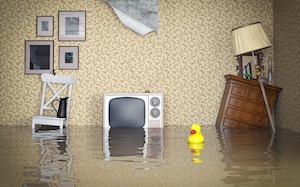6 Ways to Inspect Plumbing When Buying a Home
 Of course, you want to have a professional plumbing inspection, once you decide to buy a home, but in the beginning stages, there are some things to look for that could help you identify problems or negotiate for repairs/replacements when haggling over the price. Because much of the plumbing in a home is hidden behind walls and under floors, you’ll want to pay attention to these six items:
Of course, you want to have a professional plumbing inspection, once you decide to buy a home, but in the beginning stages, there are some things to look for that could help you identify problems or negotiate for repairs/replacements when haggling over the price. Because much of the plumbing in a home is hidden behind walls and under floors, you’ll want to pay attention to these six items:
1. Flush the Toilets
By simply flushing the toilets in each bathroom, you can see if there are any clogging or slow-running issues. It could mean there’s trouble down the line or the pipes are too small.
2. Look for Lead Pipes
Typically, the service line leading from outside is one of the most common places to find lead pipes. In other words, look for pipes that are a dark matte gray color. If you scrape it with a screwdriver, the metal will be soft and look silvery shiny underneath.
A brownish, copper color will tell you you have copper pipes that are safe. You can also use a magnet to help determine which metal it is made of. If it’s steel, a magnet will stick to it. If it’s lead or copper, a magnet will not stick to it.
3. Check Water Pressure in Showers
Turn on the shower and place your hand in the stream to see how powerful it feels. Lack of pressure could mean smaller pipes, but many showerheads are also equipped with a water-saving pressure reducer in the head.
4. Pay Attention to the Basement & Crawl Space
When touring the basement, pay special attention to the walls and floor and don’t forget about the crawl space. During the tour, look for water damage or signs of previous leaks. This could be a sign of past problems or shoddy repairs.
5. Look for Corrosion on the Water Heater
Corrosion around the bottom of the water heater is a sign of rust and a sign it is ready to spring a leak. Ask when it was last serviced. For example, if it looks very old, you may want to ask for it to be replaced.
6. Check the Size of the Pipes
Look for ¾” pipes from the water source to the home and ½” pipes to faucets to ensure proper water pressure. Smaller pipes will result in lower water pressure which can be aggravating.
